Looking back on the "Gender and Growth Gaps in South Asia" research and policy workshop
Nearly 100 members of government, academia, philanthropy, and private sector organizations gathered on August 3, 2023, in Bengaluru, India, to discuss steps to allow women greater access to the opportunities and benefits of South Asia’s economic growth. The event was hosted by the Yale Economic Growth Center, Yale Inclusion Economics, Inclusion Economics India Centre, Asian Development Bank Institute and the Udaiti Foundation.
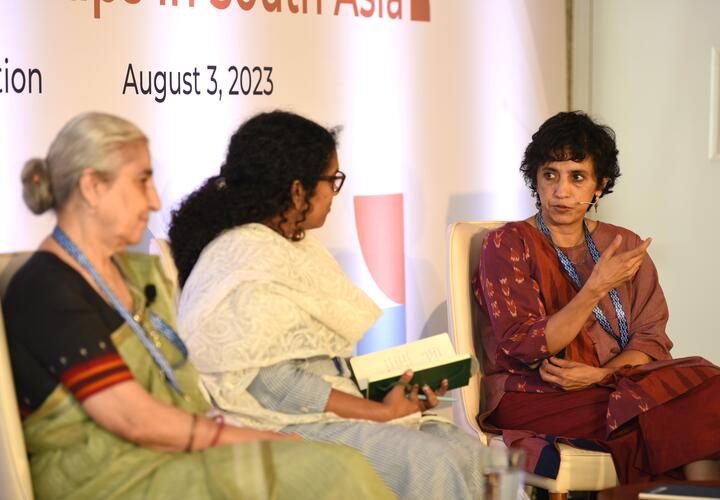
Deconstructing persistent gender gaps in South Asia and repercussions for growth
Economic growth and structural transformation are important catalysts for social shifts across nations – but will this shifting economic landscape open new opportunities and close persistent gender gaps, or will it further entrench inequities? In order to optimize the potential for inclusive growth, we must align on how economic inclusion and empowerment are conceptualized in a growing and evolving economy, map these measures across time and across regions, and model gender-sensitive policy pathways for transformation.
On August 3, 2023, the Yale Economic Growth Center, Inclusion Economics at Yale University, Inclusion Economics India Centre (IEIC), The Udaiti Foundation, and Asian Development Bank Institute (ADBI) co-hosted a workshop that brought together around 100 members from government, academia, philanthropic organizations, private companies and more to discuss women’s economic participation and returns in South Asia and potential policy levers to address key gendered barriers in the region’s labor markets. As ADBI’s Dean Sonobe noted in his opening remarks, the goal across all co-hosts for the event was to explore “research-based policy and policy-based research” in this critical domain.
South Asia is projected to experience 5.6 percent growth in 2023, according to the World Bank. Despite this, the World Economic Forum reports the region as having the largest gender gap in economic participation and opportunity worldwide. Building a path forward to a more gender-equitable economy requires disentangling a complex web of supply- and demand-side factors in the region, while acknowledging the specificities of each country’s trajectory. As a part of the ongoing Gender and Growth Gaps Project, researchers are approaching this challenge by combining both microeconomic and macroeconomic policy perspectives to examine gender and growth gaps in South Asia in the twenty-first century. The August 2023 workshop was the first of several touch-points for a wide variety of stakeholders to come together and connect the worlds of gender research and policy in the region.
Session 1: State of the Evidence and Policy Needs
Presentation
Aishwarya Lakshmi Ratan began the session by using data from the World Bank’s Global Jobs Indicators (JOIN) database to examine five measures of gender gaps in economic outcomes:
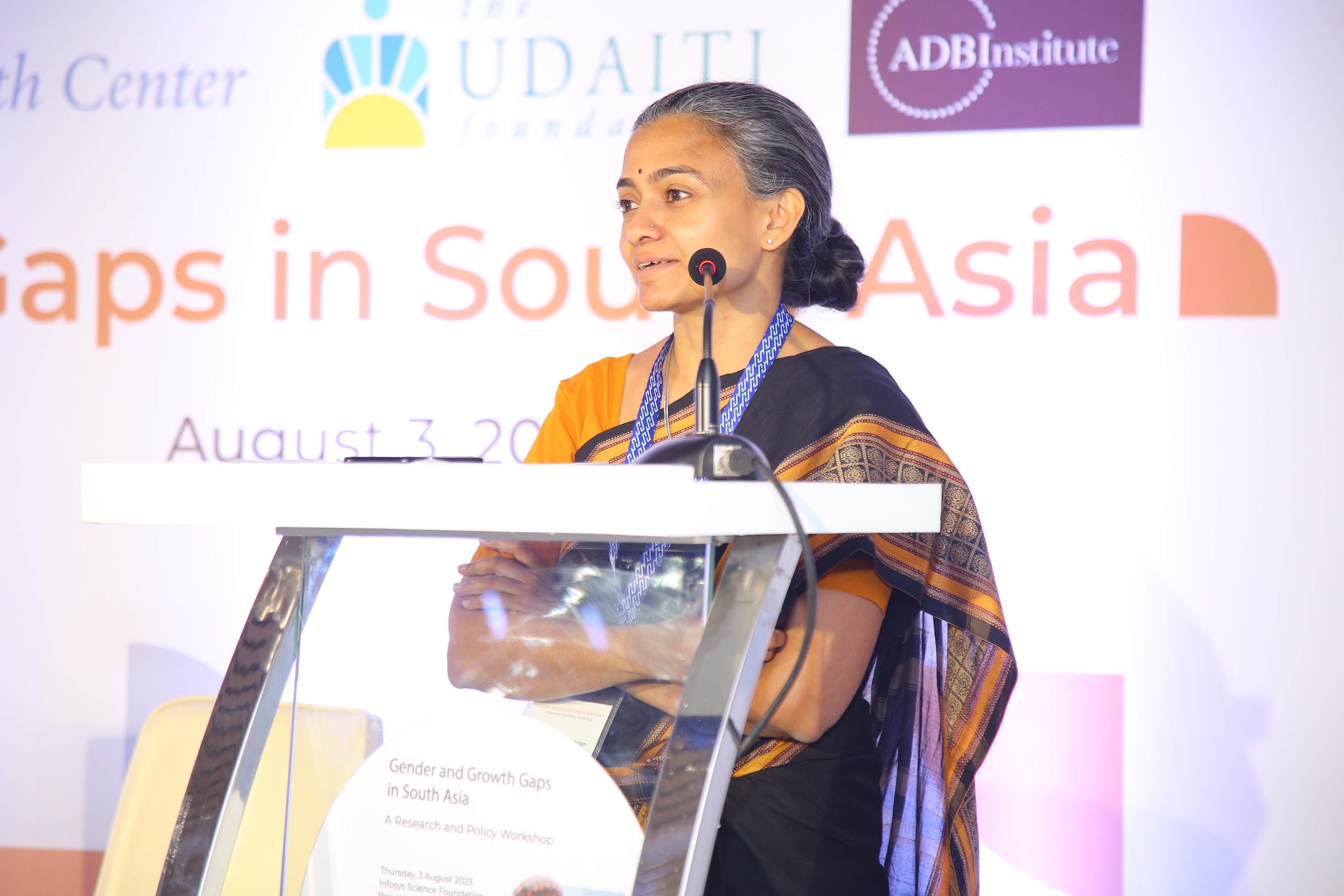 NeoNiche
NeoNiche
labor force participation; educational attainment; propensity to work in unpaid work (among those who are employed); total hours worked (excluding domestic and care work); and wages. What emerged is a picture of great heterogeneity - with gaps closing in specific countries as well as some states or districts within a country like India on some indicators, while continuing to persist across others - highlighting that these patterns warrant closer examination of underlying growth dynamics and gendered opportunities and responses. View the presentation recording here.
Panel
- Manish Sabharwal (TeamLease Services Limited)
- Aparna Uppaluri (Tata Trusts)
- Mahua Roy Choudhury (Bihar Rural Livelihoods Promotion Society)
- Moderator: Aishwarya Lakshmi Ratan (Yale Economic Growth Center)
Building off of the opening presentation, panelists brought their experiences across the public sector, private sector, and foundation space into the discussion. A central theme was the
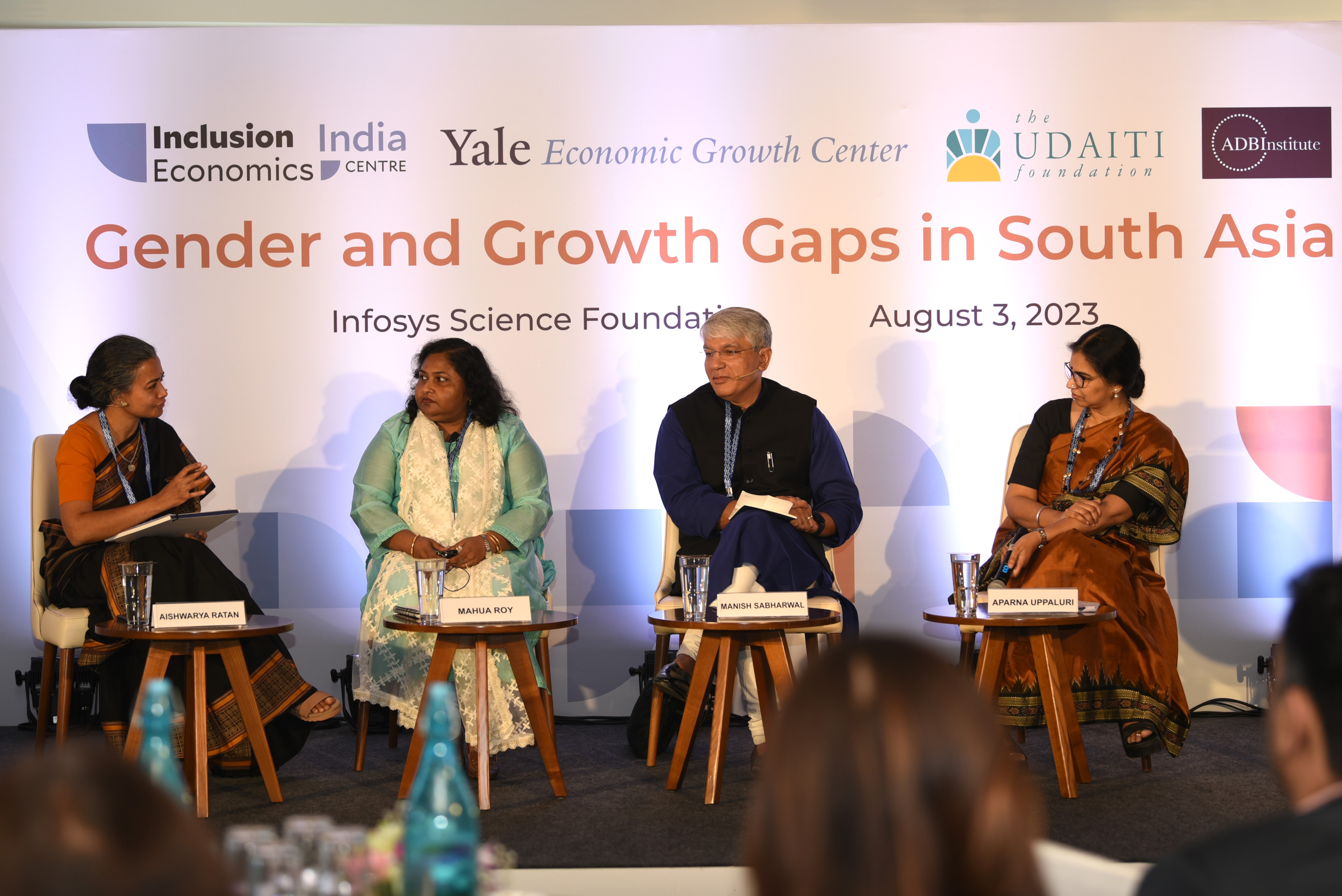 Ritesh
Ritesh
importance to policymaking of how we measure and conceptualize women’s economic participation – and the corresponding gaps between men and women’s economic engagement. At its core, evidence-informed policymaking relies on reliable measurement, and panelists discussed the gendered nature of how labor contributions are measured. They discussed agriculture as an example: women, who make up a large share of agricultural labor, are often not captured as being a part of the labor force. In this way and more, as Choudhury noted, women make a “subtle, silent, contribution to growth.” At the same time, meaningful analyses across countries and over time relies on the comparability of data based on consistent definitions, to understand changes based on real drivers vs. changes that are an artifact of shifting definitions. Taking a step further back, panelists asked whether labor force participation was sufficient as a metric to quantify economic gender gaps in a country where the poverty rate far exceeds the unemployment rate. An examination of wages and “productivity as a focus” is critical, as Sabharwal pointed out. Further zooming out, questions around the interaction of institutions and broader measures of well-being with women’s employment were examined. View the panel discussion recording here.
Session 2: Deconstructing labor demand-side issues amidst structural transformation (service-led and digitally enabled growth)
Presentations
- Gaurav Chiplunkar presented his and his co-author's work on the effect of mobile internet in developing countries and on barriers to female entrepreneurship. His work emphasizes the importance of policy targeting female entrepreneurs, who face twice the barriers of their male counterparts. He shows that the primary challenge for female entrepreneurs is in expansion, not in starting the business. This is especially important, as empowering female entrepreneurs could have a multiplier effect, as women-owned firms employ more women than men-owned firms (43 percent and 25 percent having female workers, respectively). View the presentation recording here.
- Ashwini Deshpande then presented her and her co-author's work on structural change and the decline in labor force participation in India as well as a paper analyzing women’s labor force participation across time using data from the Centre for Monitoring Indian Economy. Asserting that India’s low and declining female labor force participation are actually two separate issues, she emphasized the importance of caste and the variation across urban-rural regions in understanding these trends. She also discussed the high volatility in female labor force participation across time, showing that 44 percent of women were engaged in the labor force at least once across the four years recorded. View the presentation recording here.
Panel
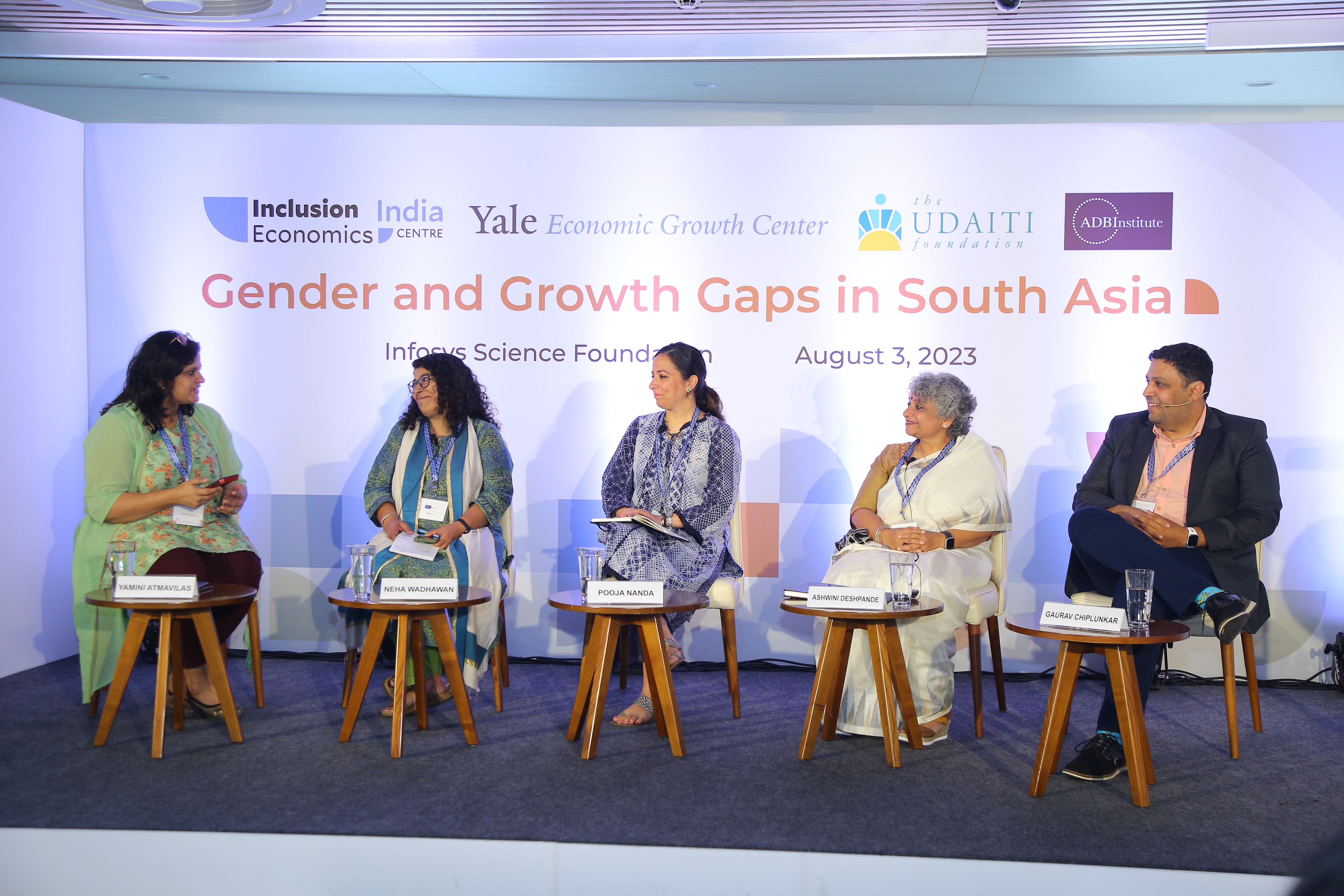 NeoNiche
NeoNiche
- Pooja Nanda (Mahindra Group)
- Neha Wadhawan (International Labour Organization)
- Gaurav Chiplunkar (Darden School of Business, University of Virginia)
- Ashwini Deshpande (Ashoka University)
- Moderator: Yamini Atmavilas (The Udaiti Foundation)
One key theme that emerged in the panel discussion was that of the importance of matching women to jobs in addressing low labor force participation rates. Young women in India are more educated than ever, and they may not be interested in the types of work often available in rural areas, like agriculture or employment in workfare schemes. One question that must be asked is how these women can be matched into appropriate work, and how the migration frictions that they differentially face can be addressed. A potential mechanism for improving access to urban employment is through providing housing, board, and training for recently migrated women. Panelists discussed the need to generate evidence on how this can be structured in a way that supports women workers, such as prioritizing recruitment in groups from the same village. With nearly half of India’s women employed in manufacturing being in the state of Tamil Nadu alone, it is crucial to identify and implement measures that enable women workers. Restrictive norms in employment creation and hiring were also important themes, with Deshpande’s resounding call to “not infantilize women” or segregate them into a narrow band of industries alongside doubling down on the equal sharing of reproductive labor. View the panel discussion recording here.
Keynote: 'Women and Work: Perspectives from Research and Practice’
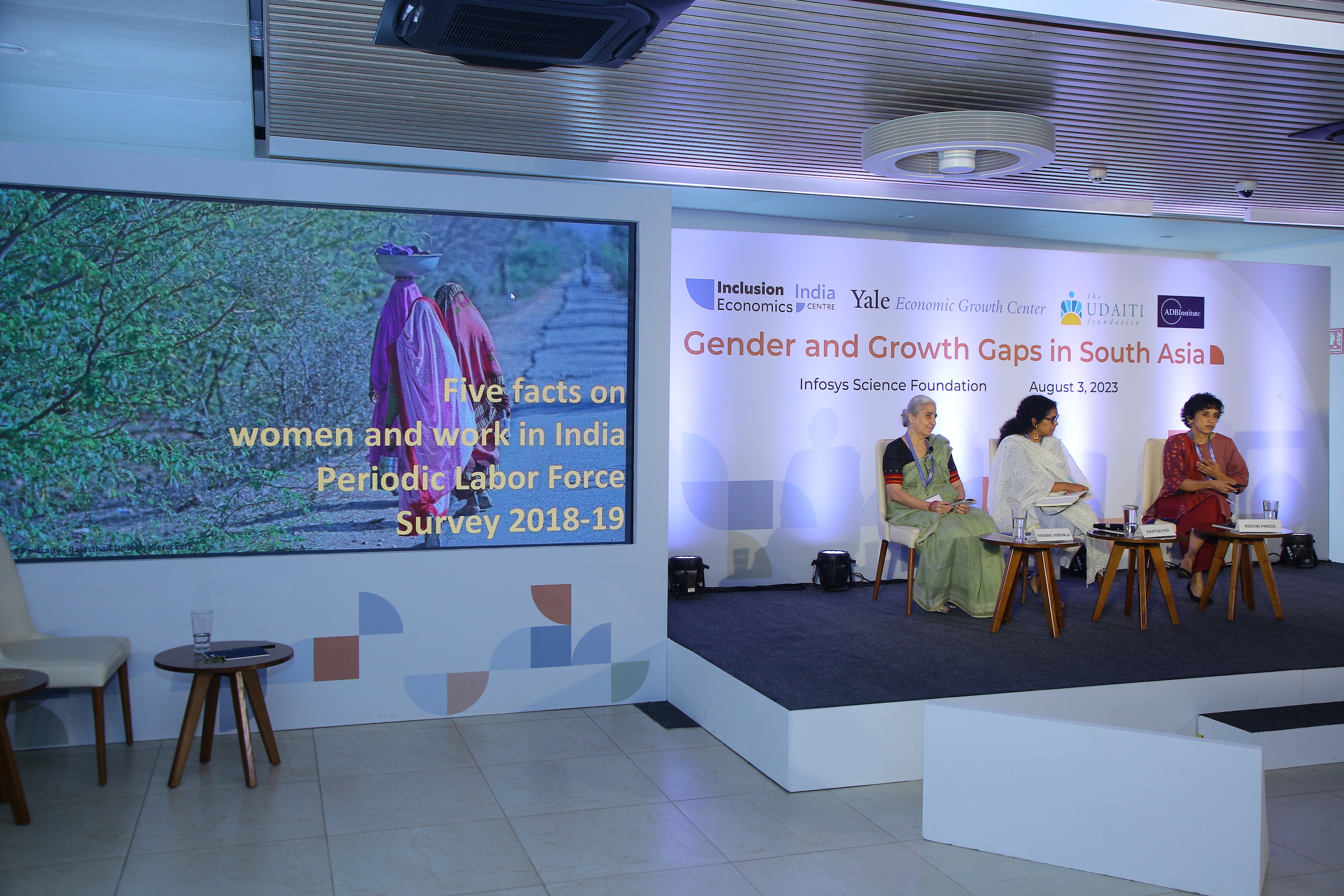 NeoNiche
NeoNiche
Keynote speakers Rohini Pande and Renana Jhabvala sat down with journalist Kavitha Iyer to discuss gender inequities in the labor market. Their keynote speeches and subsequent dialogue linked with, and built upon, many of the core themes emerging throughout the day, including:
- The need for more precise measurement, and differentiating between unpaid domestic and care work and employment on household farms and enterprises – where many women engage in labor that is measured in limited ways (as part of the ‘contributing family worker’ category), with implications for being recognised and rewarded as productive employment, even though it contributes to household income and the wider economy.
- The role that mobile phones can play in women’s empowerment, both through facilitating improved ease of collectivization as well as through the many creative usage of phones by women, like for online training and business operations.
- Challenges that women face in growing their enterprises, from lack of access to finance to being pushed out of markets by male competitors.
- The roles that government, industry, and civil society must synergistically play to collectively address underlying challenges.
WATCH THE KEYNOTE DIALOGUE
Session 3: Deconstructing labor supply-side issues (policy, practice and measurement challenges)
Presentations
Simone Schaner highlighted the role that innovation in measurement methodology can play in creating more widespread and high-quality data for decision-making.
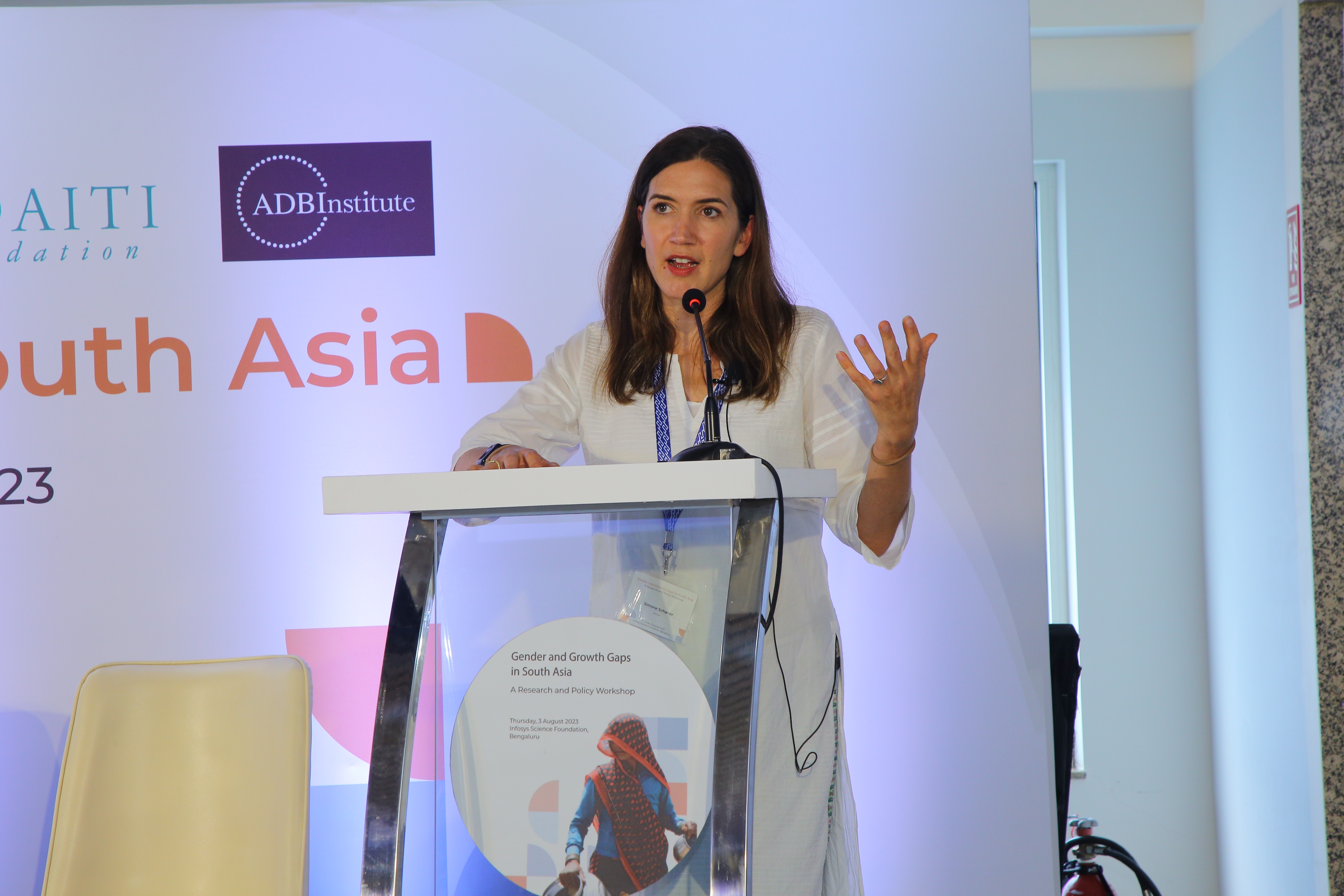 NeoNiche
NeoNiche
She used the topic of time use as an example – where time use data allows policymakers to deconstruct how women spend their time and can better inform how labor is allocated across households and how gender norms can interface with economic marginalization. Through developing an activity-based module grounded in local context, she along with her co-authors and research team members were able to more efficiently capture high-quality time use data, which has remained missing in many national datasets due to the high costs of implementing traditional modules. View the presentation recording here.
Rosa Abraham followed by countering the traditionally held belief that marriage and childbirth universally result in penalties for women in terms of labor force participation. Conversely, her research conducted in India found a large increase in labor force participation for women after marriage. Using a Life History Calendar approach, she and her co-authors find that labor force participation actually increases one year after the birth of a woman’s first child. Understanding these lifecycle trends and their association with work at specific income-levels and labor market contexts (including the spatial and temporal flexibility provided by informal work) is important in understanding the barriers that keep Indian women from the labor force. View the presentation recording here.
Panel
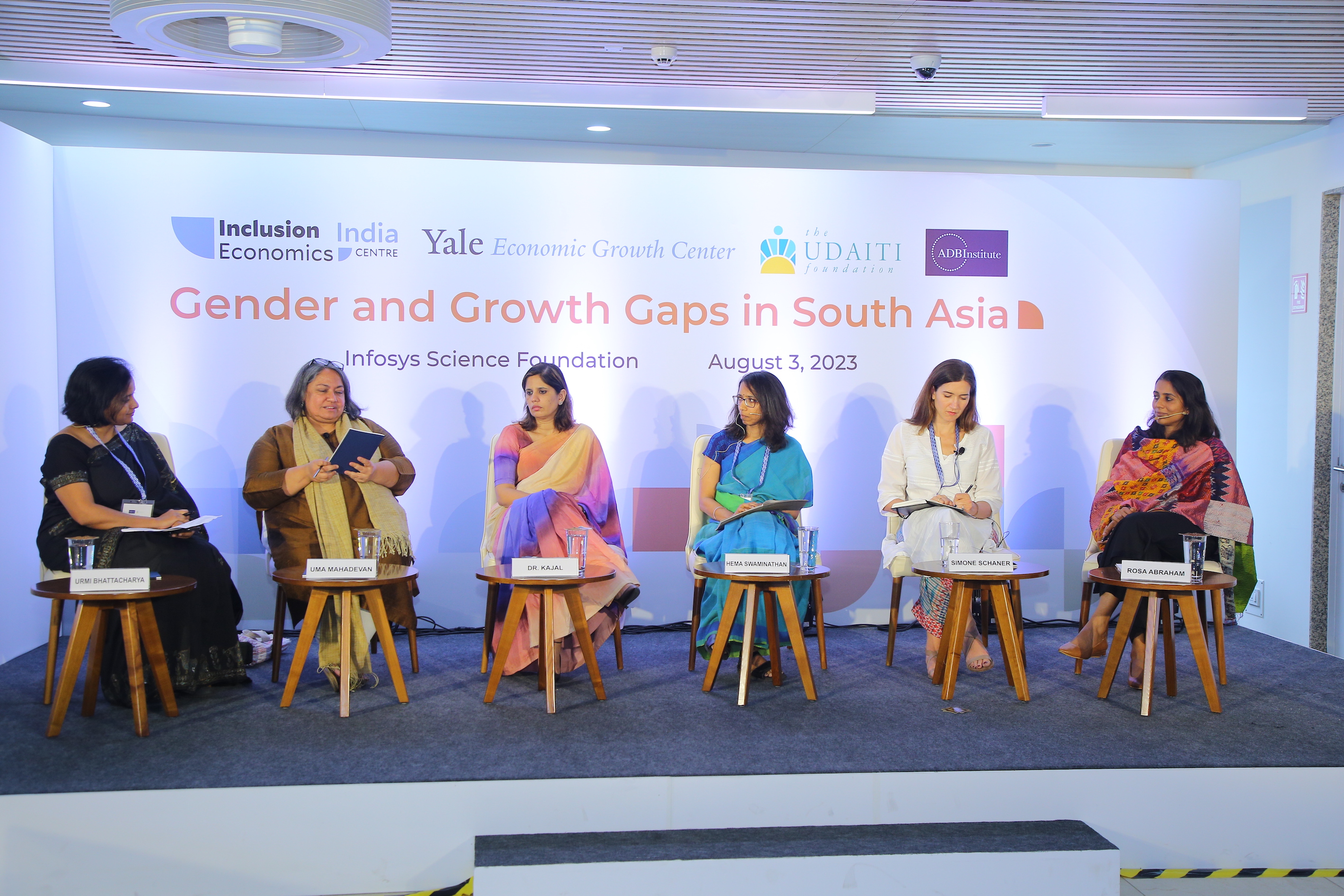 NeoNiche
NeoNiche
- Dr. Kajal, IAS (Director, Department for Promotion of Industry and Internal Trade (DPIIT), Government of India)
- Uma Mahadevan, IAS (Additional Chief Secretary, Panchayati Raj, Government of Karnataka)
- Hema Swaminathan (Indian Institute of Management Bangalore)
- Simone Schaner (University of Southern California)
- Rosa Abraham (Azim Premji University)
- Moderator: Urmi Bhattacharya (Inclusion Economics India Centre)
Panelists followed the two presentations by having a discussion around first- and second-generation biases limiting women’s labor force participation. Institutionally, women in India still are not afforded equal access to work opportunities – from the 1948 Factories Act prohibiting women’s ability to work at night to exemptions afforded to employers hiring contractors without providing maternity leave. Gaps in access to opportunities which stem from legislation are then inherited by employers and foster a culture of reinforcing traditional gender norms, which put women on unequal footing in the workplace. One example of this, as Swaminathan pointed out, is companies’ provision of flexible work to mothers with young children and absence of paternity leave – both of which reinforce the notion that childcare duties fall upon the shoulders of women and that their labor should be discounted due to competing duties. Cognizant of these barriers to female labor supply, Mahadevan then provided examples of several initiatives that the Government of Karnataka has started to help facilitate access to work, including providing free transportation to women and setting up 150 creches to provide childcare services. She emphasized that where demand hasn’t been registered for these services, many will need to be convinced to take proactive measures – driving home the need to better measure barriers to women’s economic engagement outside the home and elevate their voices to inform gender-sensitive policy. View the panel discussion recording here.
Parallel Sessions
In the afternoon, attendees broke out into three parallel sessions: Gender and Climate Change, Measurement Issues, and Policy Tools. Each of these sessions was led by experts in the field, who introduced their work and then facilitated discussions with attendees.
I. Gender and Climate Change
Co-leads: Dil Rahut, Anil Pokhrel, and Arjan de Haan
This session posed the question, “How can policymakers advance gender-sensitive economic development in the midst of climate breakdowns that threaten economic growth and are likely to affect women’s economic opportunities and activities?” Session co-leads discussed their experiences in research and governance at the nexus of gender and climate change adaptation. There are a wide variety of factors governing the ways in which women differentially experience, adapt to, and seek to mitigate climate change. Social norms, biology, access to credit, access to information, and asset endowment all contribute to the disproportionate effects of climate change on women. Measuring vulnerability, or conversely resilience, therefore requires weighting a wide range of contributing factors. As the Government of Nepal develops a gender-intentional national strategy to map climate change risks, policymakers are faced with the challenge of identifying both socioeconomic and physical factors that affect resilience – a key step in allocating resources to municipalities most at risk. In a country that has recently experienced a wide variety of natural disasters, from drought and fires to flooding and landslides, a central question is how measurement for identifying those most at risk can be standardized.
II. Measurement Issues
Co-leads: Sandhya Garg and Nandana Sengupta
In this session, co-leads and participants came together to ask how innovations in measurement can better capture information on female labor force participation, and the underlying forces contributing to gender gaps, in South Asia. One theme to emerge from this discussion was that, even when we hold constant survey definitions of work, there are gender biases in how work and skills are conceptualized and reported. First, women are more likely to be conservative with how they report their skills. Second, women in some cases may not recognize their labor contributions as work, and we must further test and refine the ways in which economic activities are captured in surveys such that women will report those activities.
III. Policy Tools
Co-leads: Roli Asthana, Aishwarya Lakshmi Ratan, and Yamini Atmavilas
This session delved into the opportunities and challenges of the evidence-to-policy pipeline, and strategies for bolstering its effectiveness. Co-leads explored specific cases and patterns from the region, including Bangladesh’s manufacturing-driven approach, and public infrastructure in Indian states like Tamil Nadu. Approaches such as bundling of services, scaling women’s enterprises, improving the quaps-south-asia-research-and-policy-workshop/august-3-genderality of informal work, and balanced regulation were emphasized. Fundamentally, attendees discussed that in order to drive policy towards the most effective programs, the voices of participants and potential participants must be centered in the dialogue, treating monitoring and feedback as more than just a formality. Once evidence has been generated, session leads discussed the importance of consistent and strategic conversations with not only policymakers, but also private sector actors. Part of the strategy element involves an understanding of which factors will be most important for decision-making based on the audience. Participants also emphasized the need to embed cost-effectiveness as an outcome within evaluations, as comparative efficiency and effectiveness are at the core of how decision-makers allocate funds across competing priorities.
For information on other themes discussed across the plenary sessions at the conference, please refer to the full session recordings here.
EGC would like to acknowledge input from Akash Uppal, Aishwarya Lakshmi Ratan, Ayush Jain, and Vestal McIntyre to this article.